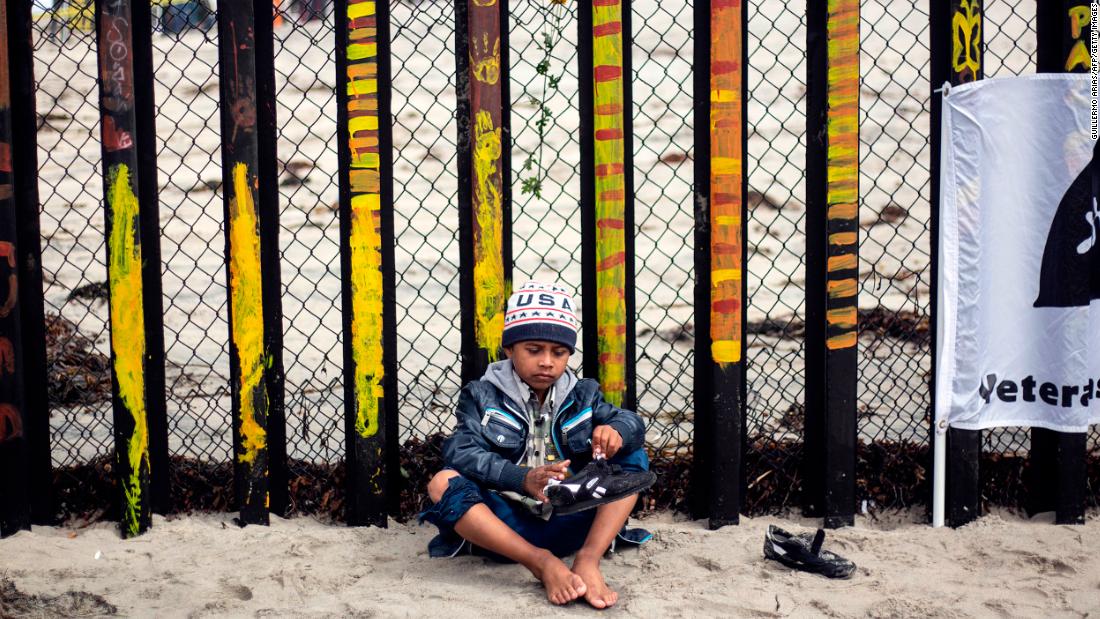[ad_1]
The policy, which drew international outcry for its effect of separating thousands of immigrant families, followed months of previous Trump administration efforts to change border policies, including by rolling back a host of protections for immigrant families put in place by courts and Congress.
Though these moves are partly a reflection of this President’s far more aggressive stance toward immigration, they also reflect this simple fact: Migration at the southern border today is entirely different than it was five years ago.
Much of Trump’s rhetoric on the border harks back a decade, to a time when mostly Mexican individuals were crossing the border illegally in huge numbers looking for work.
But today the situation is far different. Illegal immigration from Mexicans has dropped substantially, and increasingly migrants are fleeing violence and instability in Central America.
The pool of migrants is also increasingly made up of families and of children on their own. Many of them seek asylum when they arrive, believing they may qualify for protections designed for immigrants fleeing persecution in their home countries. They may also know that the court backlog means they’ll likely get to live in the US for at least a few years while they pursue their claims.
The laws, however, have not caught up to the new migration patterns.
“So it’s a tough dilemma. It was a tough dilemma for the Obama administration and it resulted in a lot of difficulties for them, and it’s a tough dilemma for the Trump administration,” said Randy Capps, an immigration trends expert with the nonpartisan Migration Policy Institute. “It’s giving them a lot of trouble right now.”
But as overall crossings have dropped, the share of crossings by families has steadily increased.
In 2013, 87% of those caught crossing the border illegally were individuals. By 2017, that number had plummeted to 61%. Meanwhile the share of families crossing grew from nearly 4% to nearly 25%, and the share of children traveling alone climbed from 9% to 14%.
The Trump administration has called the laws that protect families and children “loopholes,” asking Congress to reverse many of them. Specifically, the administration has sought to reverse a court settlement that children with their families must be released from detention after 20 days.
Judge Dolly Gee called the government’s argument that an increase in families at the border had come because of the earlier settlement “dubious” and unconvincing,” rejecting it.
“Any number of other factors could have caused the increase in illegal border crossings, including civil strife, economic degradation, and fear of death in the migrants’ home countries,” she wrote.
The administration has also sought the reversal of protections for children in the unanimously passed William Wilberforce Trafficking Victims Protection Reauthorization Act. In particular, it wants to be able to immediately deport children from Central America, as it is able to do with children from neighboring Mexico. It also has targeted parts of the law that give children longer to pursue asylum claims, and the right to do so in a less adversarial setting than adults.
Those moves are a reflection of the increased share of migrants coming from Central America — who reflect a different set of motivations than the economically motivated Mexican migrants of decades past.
“Before 2013, it was almost the vast majority Mexican, the vast majority adults and economic migrants,” Capps said. “And now this is a mixed flow. It’s a mixed flow of countries, it’s a mixed flow of demographics because it’s not just adult men, and it’s a mixed flow of reasons for coming because it’s not just economic migrants, it’s a lot of people fleeing violence as well.”
That has resulted in a sharp uptick in asylum claims in the US, which has bogged down the immigration courts that judge whether an immigrant has the right to stay in the country. The number of immigration judges has barely grown, standing today at roughly 330, while the backlog of cases has swelled to 700,000.
A further reflection of the rise in asylum seekers is the number of people showing up at legal crossings without paperwork to enter the country, rather than sneaking across illegally. Many of those individuals make asylum claims once they are on US soil, and an increasing share of the total number of Southwest border migration is represented by these “inadmissable” immigrants.
The administration’s efforts are rooted in the belief that with enough of a crackdown, would-be migrants can be deterred. But Capps said that notion misunderstands the motivations of who is coming to the border today.
“This whole question of deterrence is an interesting question, because you’re talking about deterring people from risking their lives on a pretty dangerous journey through Mexico, many of whom felt their lives were threatened in their home countries, or their livelihoods were threatened,” Capps said. “Unless you cut off asylum altogether, unless you detain everyone who comes to stay … it’s going to be very hard to cut off these flows, and then you’re denying humanitarian rights to people.”
“Some people do have valid asylum claims,” he added.
He acknowledged that smuggling organizations and Central Americans do study what happens in the US, and smugglers and families already in the US send word back home about what opportunities to sneak into the US might exist. But that doesn’t mean they can be convinced to stay home.
“There’s just a certain group of people, particularly in Honduras and more so Guatemala, who are going to try to come eventually unless conditions in their home country improve,” he said. “It’s just a matter of timing.”
[ad_2]
Source link

